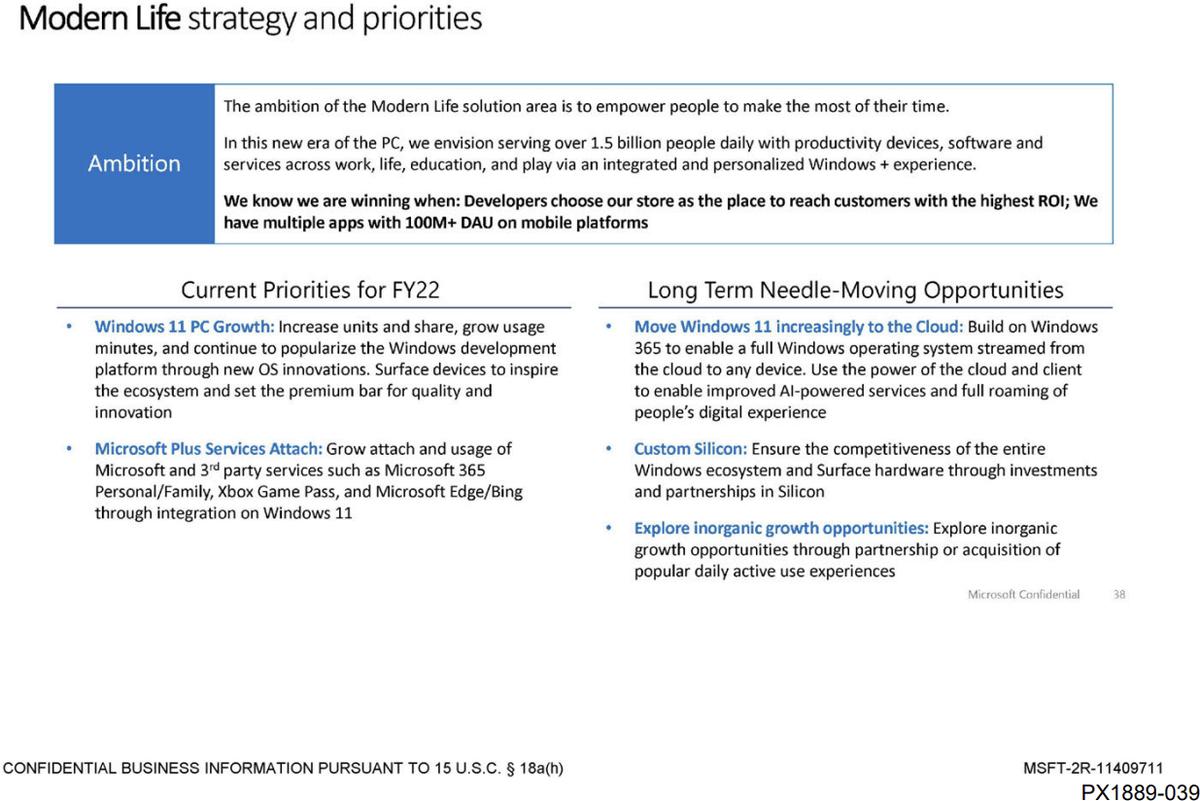Microsoft introduced Windows 365 cloud service a few years ago, enabling business clients to run cloud PCs that operate on either Windows 11 for their staff. However, the corporation is not content with just that. Microsoft may introduce a Windows 365 subscription for regular users in the future. This intent is outlined in an presentation from June 2022.
The presentation is part of the ongoing FTC v. Microsoft hearing, that details Microsoft's comprehensive gaming strategy and its relationship to other areas of the company's businesses.

According to the presentation, Microsoft is considering moving Windows 11 to the cloud for consumers in the long term, in order to offer customers improved services based on artificial intelligence and other technologies.
Another slide in the presentation notes that Microsoft intends to strengthen the commercial profile of Windows and counter the threat posed by Chromebooks.
Microsoft's Windows 365 cloud service allows users to stream a full version of Windows 11 from the cloud to any device. Currently, it is only available to commercial customers. But it is already integrated into Windows 11 through features like Windows 365 Boot and Windows 365 Switch. The latter adds CloudPC sessions directly to the Task View/Alt+Tab dialog.
Support us
Winaero greatly relies on your support. You can help the site keep bringing you interesting and useful content and software by using these options:

This looks like the beginning of the end for Windows.
The destruction of Office began in 2010 with the announcement of Office 365, which was first made available to victims a year later. By 2013 it was promoted as the primary channel to obtain Office, and in 2017 its revenue overtook that of perpetual license Office.
In 2021 what was likely the final version of true, perpetual Office was released, and notably support was limited to only five years. Simultaneously the tapeworm (“subscription”) Office business was fully rebranded as 365, conveniently severing the thread of memory to a time when you got to own and use software forever.
It looks like Microsoft is now set to replay this with Windows itself. Considering the more mature state of cloud computing and growing customer acceptance of perpetual abuse, it’s likely the timeline will be much faster. By the end of this decade Windows might be dead.
Ever since the release of Windows 2000 I’ve loved this operating system, and with the help of great third party developers like Sergey Tkachenko I’ve managed to survive Microsoft’s periodic and baffling assaults on their core product. But I will never swallow a tapeworm, and it looks like I should start planning my escape to Linux.